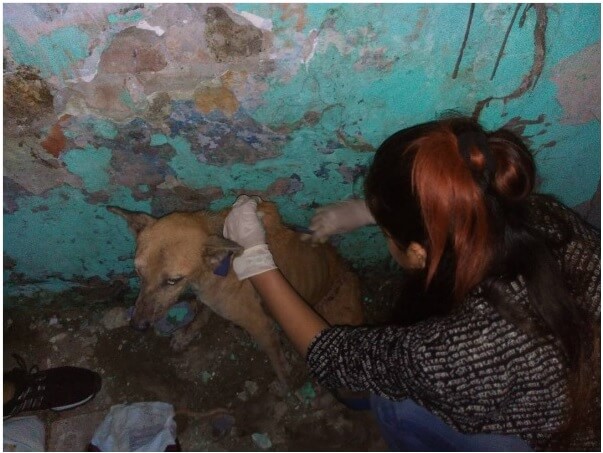Is your dog an obsessive licker? Does he frequently scratch the floor or his skin? Chances are your furry friend is suffering from an allergy.
Dog allergies are one of the most commonly diagnosed pet health issues. As responsible pet parents, it is always good to discover the dog allergies that your pooch may be suffering so that you may take necessary counteraction.
In this post, we will explore various dog allergies and some dog allergy treatments you can try out in your homes.
You are your dog’s first line of defense so it is imperative that as responsible pet parents you know about the various allergens and dog allergies. Knowing the symptoms and ailments would help you ensure that your dog gets the best care possible.
Dog allergies treatment
Senior dogs are more prone to seasonal allergies. Learning how to manage your dog’s symptoms would help you ensure his comfort. The dog allergies can be classified into the following four broad categories:
1. Insect Bite Allergy: Be it flea bites or any other insect bite, dogs may get a severe pain and skin allergies from it.
2. Inhalant Allergy: Is your pup sneezing? It may be because of inhalant allergies – tree pollen, grass, weed, mold, mildew, and dust mites. Please let go of the air fresheners and scented candles. A dog’s sense of smell is at least 40 times more sensitive than ours. Artificial scents are an assault on their noses.
Second-hand smoke from cigarettes is also a threat to your dog.
3. Contact Allergy: Sometimes your dog may develop skin irritation towards a host of things – pesticide on the lawn, carpet rug or wool. You may discover it by observing where your dog seems to scratch the most and then by removing potential allergen.
Some dogs are also allergic to latex rubber (balls, squeaky toys, etc).
Also read: How to help your itchy dog?
4. Food Allergy: Like humans, dogs too can develop allergies towards food items – dairy, gluten etc. It can be treated by the elimination of the respective food item from the dog’s diet.
Dog allergy treatments you can try at home
Just like in humans, allergies can range from mild to medically grave depending on sensitivity. There are various home remedies for your dog’s symptoms that you can easily prepare using household items.

1. Oatmeal bath to get rid of your dog’s itching – Mix about a handful of oatmeal in cool water, and use this to wash your dog’s skin.
2. Baking soda to relieve insect bites –Mix baking soda in some cool water and apply it gently on the skin infected by an insect bite.
3. Coconut oil has strong antifungal and antibacterial properties -If you add in a little turmeric, it would help your dog’s liver to detoxify.
4. Fresh or dried Calendula flowers are great for skin-related allergies in dogs.
5. Ashwagandha (Withaniasomnifera) leaves (boiled in water) are a proven anti-inflammatory.
In case your dog has an aggravated case of an allergy, please consult a vet for dermatology advice at the earliest.

Food Allergies vs. Food Intolerances in Dogs: How to Tell the Difference and What to Do
If your dog constantly scratches, gets frequent ear infections, or has recurring tummy troubles, their food may be the underlying issue. But is it a food allergy—or just a food intolerance? While the symptoms can overlap, these are two different health challenges that require different approaches.
In this guide, you’ll learn how to tell them apart, what signs to watch for, and how to help your dog feel better—starting with their bowl.
What’s the Difference Between Food Allergies and Intolerances?
The key distinction is how your dog’s body reacts to certain ingredients. Food allergies involve the immune system, while intolerances are digestive responses.
Food Allergies in Dogs
A food allergy is an overreaction of your dog’s immune system to a protein it mistakenly sees as a threat. These reactions can appear suddenly—even to foods your dog has eaten for years—and can cause:
-
Itchy, inflamed skin (often around the paws, ears, belly, or face)
-
Red or irritated patches, also called hotspots
-
Frequent ear infections
-
Vomiting or diarrhea
-
In rare cases, swelling or serious allergic responses
These signs can resemble other conditions like environmental allergies or flea bites, which is why pinpointing the source often takes time and careful observation.
Food Intolerances in Dogs
Unlike allergies, intolerances don’t involve the immune system. Instead, they’re caused by the digestive system’s inability to break down certain ingredients. This can happen due to enzyme deficiencies or poor gut health.
Common symptoms of food intolerance include:
-
Loose or chronic stool
-
Excessive gas or bloating
-
Occasional vomiting
-
Mild itching or skin irritation (linked to gut imbalance)
One common example is lactose intolerance—many dogs can’t properly digest dairy and may develop diarrhea after consuming it.
Common Food Triggers in Dogs
While many people assume table scraps are the main cause, it’s actually everyday proteins and grains in commercial pet foods that tend to cause the most issues. Here’s a breakdown of common culprits:
| Ingredient | Allergy Risk | Intolerance Risk |
|---|---|---|
| Beef | High | Moderate |
| Chicken | High | Moderate |
| Dairy | High | High |
| Wheat | Moderate | High |
| Soy | Moderate | Moderate |
| Lamb | Moderate | Low |
| Corn | Moderate | Moderate |
| Eggs | Moderate | Moderate |
Most dogs develop allergies after long-term exposure to the same ingredient. That’s why proteins like duck, venison, or rabbit are often used in elimination diets—they’re less likely to trigger a reaction due to being “novel” foods for most dogs.
What Causes Food Allergies to Develop?
Dogs are born with a system that typically tolerates food proteins. But in some cases, this balance breaks down due to:
-
Genetic predisposition
-
Chronic gut inflammation
-
Leaky gut syndrome
-
High-stress environments
-
Repeated exposure to the same proteins
When this happens, the immune system starts targeting otherwise harmless ingredients, leading to chronic inflammation and allergic reactions. A healthy gut is key to preventing these misfires.
How to Identify the Problem: The Elimination Diet
The most reliable method to determine if your dog has a food allergy or intolerance is through an elimination diet. This process takes time and consistency but offers the clearest answers.
How to Start an Elimination Diet:
-
Choose a novel protein and carbohydrate that your dog has never eaten before (e.g., rabbit and quinoa, or duck and sweet potato).
-
Feed only these ingredients for 8–12 weeks. This means no treats, table scraps, flavored medications, or supplements.
-
Monitor for improvement in skin, digestion, and energy levels.
-
Slowly reintroduce ingredients one by one, waiting 1–2 weeks between each, to observe any return of symptoms.
If your dog’s symptoms disappear during the trial and then return with a specific food reintroduction, you’ve likely found the source of the problem.
Tips for Success:
-
Keep a food journal to track ingredients and symptoms.
-
Make sure everyone in the household follows the diet plan strictly.
-
Simple additions like plain bone broth or fermented vegetables can support gut healing—just ensure they’re free of allergens.
Dietary Solutions for Sensitive Dogs
Once you’ve identified the ingredient(s) causing issues, it’s time to choose a diet that avoids those triggers and supports your dog’s overall health.
Limited Ingredient Diets
These diets contain fewer ingredients, making it easier to control what your dog is eating. They usually focus on:
-
A single animal protein
-
A single carbohydrate source
-
No artificial additives or fillers
This approach is ideal for managing food sensitivities over the long term.
Hydrolyzed Protein Diets
In these diets, proteins are broken down into very small pieces—so small that the immune system can’t detect them. This prevents the immune response that causes allergic reactions.
These diets are often used in severe cases or when multiple food allergies are suspected. They are typically prescribed under veterinary supervision.
Novel Protein Diets
Feeding proteins your dog hasn’t eaten before (like duck, rabbit, or even fish) helps reduce the chance of triggering an allergic response. These diets are commonly used in elimination phases or as a long-term solution for dogs with protein sensitivities.
Does Cooking Style Impact Allergies?
Yes, the way food is prepared can affect how your dog’s body reacts to it.
High-heat processing—such as that used in kibble and canned food—can change the structure of proteins, sometimes making them harder to digest or more likely to provoke a response. On the other hand, fresh, gently cooked, raw, or air-dried diets may be easier on your dog’s digestive system and less likely to trigger problems.
Transitioning to these types of food should be done gradually and under the guidance of a veterinarian to avoid digestive upset.
If your dog is showing signs of itching, gastrointestinal distress, or other food-related symptoms, understanding the difference between food allergies and intolerances is crucial. While it takes time to identify the root cause, most dogs find lasting relief through a well-managed elimination diet and careful ingredient selection.
As always, work with a veterinarian when starting a new diet or if your dog’s symptoms are severe. With the right approach, your pup can enjoy meals again—itch-free and full of tail wags.
See Also, how to How to keep your dog safe from ticks.


Any help with ticks .. apart from the no ticks powder .. We have 3 strays who stay in the balcony but free to go out as and when they please .. They are ridden with ticks all thru summers and rains.
Ensuring our pets are tick-free is crucial for their well-being. Regular checks and preventive measures go a long way.